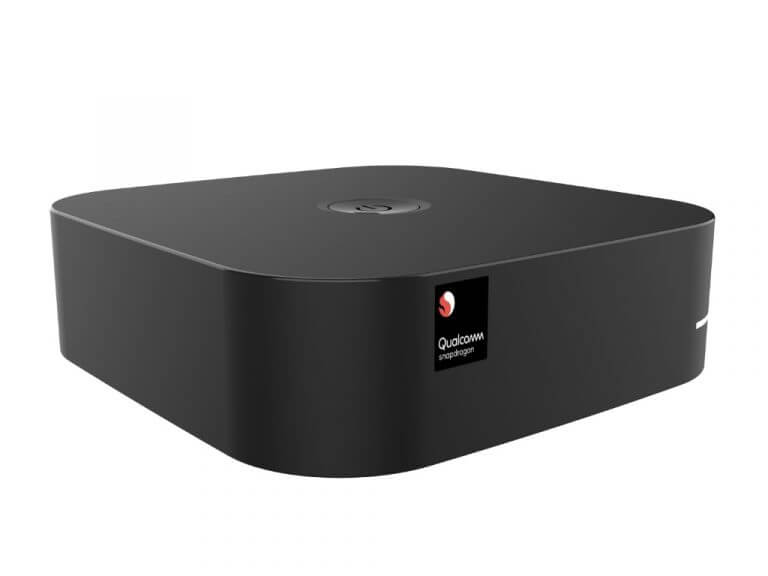Qualcomm has unveiled today an affordable Snapdragon Developer Kit for Windows 10 on ARM that developers will be able to purchase at the Microsoft Store this summer. The software giant has teamed up with Qualcomm to create this new small desktop PC which offer app developers an affordable way to test their native ARM64 apps.
The Snapdragon Developer Kit will be powered by a Qualcomm Snapdragon 7c SoC, a chip built from the ground up for Always Connected PCs. We don’t have details about specs and pricing yet, but the design seems of this Snapdragon Developer Kit looks heavily inspired from Apple’s Mac Mini and other mini PCs or Chromeboxes that usually come with low cost x86 processors.
As you may remember, Qualcomm announced its Snapdragon 7c Compute platform for entry-level PCs back in December 2019, and the chip maker promised at the time up to 20% faster system performance than competitive platforms and up 2x the battery life of typical entry-level PCs. Today, Qualcomm announced its Snapdragon 7c Gen 2 Compute platform with advanced AI and support for multi-day battery life, though it’s not exactly clear if the Snapdragon Developer Kit will use this new chip or the first-gen Snapdragon 7c SoC.
Windows 10 on ARM PCs have been around since 2018, but the first models were using lackluster smartphone chips before Qualcomm came up with its Snapdragon 8cx, 8c, and 7c SoCs, which have been specifically designed for Windows 10 on ARM PCs. Microsoft’s Surface Pro X was the first Windows 10 on ARM device to use a modified version of Qualcomm’s top-of-the-line Snapdragon 8cx chip, but the $999 starting price and persisting app compatibility issues have so far prevented Windows 10 on ARM devices to really take off. The Surface Pro X actually launched before an ARM64 version of the new Chromium-based Edge became available, and that was definitely disappointing for early adopters.
In retrospect, Microsoft should have launched this new cost-effective Windows 10 on ARM PC for developers years ago, though it’s certainly better late than never. When Apple announced the Mac’s transition to Apple silicon last year, the company first made a Mac Mini based on the company’s A12 Bionic chip available for developers, and the first consumer Macs with Apple Silicon only shipped a couple of months later. Microsoft went the other way around and had its partners test waters with unpowered devices using smartphone chips before ensuring first that its ARM64 app ecosystem was ready for consumers.
If Apple expects to transition its whole Mac family to Apple Silicon by 2022, Microsoft seems to be on a much different trajectory with Windows 10 on ARM. The platform only received support for x64 app emulation in preview last year, and many developers have yet to recompile their apps for the ARM64 architecture. Microsoft released a minor update to its Surface Pro X tablet last year with a slightly more powerful Qualcomm-made SQ2 processor, but we’re still far from the major performance and power efficiency gains Apple demonstrated with its first M1-based Macs.
The Qualcomm Snapdragon Developer Kit is definitely a step in the right direction for the Windows 10 on ARM ecosystem as the platform likely won’t take off until Microsoft can get more developers on board. The hardware question also remains essential as we have yet to see a killer ARM-based PC from Microsoft and its partners. However, a recent report suggested that Microsoft could be interested in designing its own chips for servers and Surface devices, and Apple’s M1-based Macs are indeed a pretty good example of successful vertical integration.


